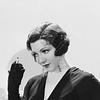Take a photo of a barcode or cover
informative
slow-paced
I am a great admirer of Jane Addams and her work creating the first settlement house in the United States, Hull-House, for Chicago’s urban poor in 1889. I went into reading this book hoping to learn more about the settlement movement and Ms. Addams’s role as America’s first social worker.
Twenty Years at Hull House was written by Jane Addams because several inaccurate biographies had been written and Addams wanted to ”set the record straight.” In the first quarter of the book Addams inundates the reader with the wonders of her childhood and how brilliantly enlightened she was at such a young age due impart by her god-like father. Memoirs/autobiographies should always be read with a grain of salt, but in the case of Twenty Years at Hull House..., and Addams’s reminiscing of her childhood, one needs a shaker of salt. Addams was truly a gifted child and student – at least to Jane Addams.
With that being said the rest of the book centers on Hull-House and the settlement movement which was very informative, especially the plight of immigrants and women in America due to our Industrial Revolution and the callousness of management. A section in the book that I found very interesting was when Addams speaks of the “white slave’ market in Chicago and how Hull-House became a refuge for young girls. Addams wrote without judgment of the girls, but was scathing with her opinion of society’s role in prostitution - a very bold sentiment for the times. Addams describes Hull-House as the “older brother” in the neighborhood making sure that there was someone or something in place to protect those less fortunate and who could not defend themselves.
Another area that Hull House played a critical role was in helping to facilitate the formation of labor unions among the women garment workers in Chicago. Through their efforts women not only started to collectively bargain, but several women went on to become leaders in The American Federation of Labor.
But Hull-House was more than a place where political activism was realized. Hull-House’s main purpose was to provide social and educational opportunities for Chicago’s urban poor. Its facilities included a night school for adults, kindergarten classes, clubs for older children, a public kitchen, an art gallery, a coffee house, a gym, a girls' club, a bathhouse, a music school, a drama group, and a library – ideas and niceties that were only available to the middle and upper classes.
Overall, Twenty Years at Hull House is a detailed, scholarly look at the settlement movement and the important role it played in helping immigrants assimilate and gain access to the American Dream. John Burns, the English labor leader, pronounced Jane Addams "the only saint America has produced.” I agree.
Twenty Years at Hull House was written by Jane Addams because several inaccurate biographies had been written and Addams wanted to ”set the record straight.” In the first quarter of the book Addams inundates the reader with the wonders of her childhood and how brilliantly enlightened she was at such a young age due impart by her god-like father. Memoirs/autobiographies should always be read with a grain of salt, but in the case of Twenty Years at Hull House..., and Addams’s reminiscing of her childhood, one needs a shaker of salt. Addams was truly a gifted child and student – at least to Jane Addams.
With that being said the rest of the book centers on Hull-House and the settlement movement which was very informative, especially the plight of immigrants and women in America due to our Industrial Revolution and the callousness of management. A section in the book that I found very interesting was when Addams speaks of the “white slave’ market in Chicago and how Hull-House became a refuge for young girls. Addams wrote without judgment of the girls, but was scathing with her opinion of society’s role in prostitution - a very bold sentiment for the times. Addams describes Hull-House as the “older brother” in the neighborhood making sure that there was someone or something in place to protect those less fortunate and who could not defend themselves.
Another area that Hull House played a critical role was in helping to facilitate the formation of labor unions among the women garment workers in Chicago. Through their efforts women not only started to collectively bargain, but several women went on to become leaders in The American Federation of Labor.
But Hull-House was more than a place where political activism was realized. Hull-House’s main purpose was to provide social and educational opportunities for Chicago’s urban poor. Its facilities included a night school for adults, kindergarten classes, clubs for older children, a public kitchen, an art gallery, a coffee house, a gym, a girls' club, a bathhouse, a music school, a drama group, and a library – ideas and niceties that were only available to the middle and upper classes.
Overall, Twenty Years at Hull House is a detailed, scholarly look at the settlement movement and the important role it played in helping immigrants assimilate and gain access to the American Dream. John Burns, the English labor leader, pronounced Jane Addams "the only saint America has produced.” I agree.
have an fascination with the women on the early 20th century lately- im committed to reading their stories. while most of them lived in retched conditions they still found to work as community and petition for better conditions. two important qualities and lessons i really admire about women of 20th century
challenging
reflective
slow-paced
I read this book as a fan of Jane Addams without much of an idea of what I hoped to gain from this book. Early on, I found the autobiography at the beginning of the book comforting to know that Jane Addams, one of the greatest social reformers, also like myself currently, went through a phase where she knew that she wanted to help others, but was unsure how. However, as I got deeper into the book I struggled. There are several parts where miscellaneous stories and political movements are pieced together that can be hard to follow. Moreover, some political figures and movements are alluded to with an expectation for the reader to have some background knowledge. Personally, my knowledge of history was often not sufficient to get by without researching for context which made this book laborious. Eventually, I gave up on gathering context and just tried to pick out meaning from within the stories when possible.
honestly this was kind of boring sometimes but Jane Addams is a baddie and i support her
There is no doubt Ms Addams was ahead of her time but this book was about as interesting to read as watching paint dry. A potentially fascinating retelling made dull.
I read this for a 6th grade project on notable American women. As memory serves, it was incredibly dull (no doubt because I was a kid when I read it). Jane Addams was quite a remarkable lady, but if wikipedia had existed back then, I surely would have done some research to find a more colorful character.





